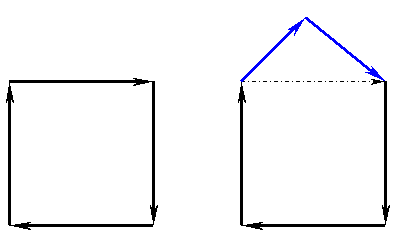
Augmentation Diagrams
Augmentation can be performed in one of five (or six) ways:

(a) one or more of the faces adjoining a locally convex vertex can be augmented, the limiting factor is to retain the local convexity of the vertex
(b) all of the faces adjoining a locally convex vertex can be excavated. The excavation must be deep enough to re-create a (highly wound) locally convex vertex (with opposite polarity to the original).
(b') a variation on case (b) where one of the original faces is left un-excavated. The remaining excavations are deep enough to re-create a (highly wound) locally convex vertex (with opposite polarity to the original).
(c) one or more of the faces adjoining a locally convex vertex can be excavated, the excavating polyhedron must have one (and only one) retrograde face. This face is then the face used for excavation. The excavation must be shalklow enough to retain the local convexity of the vertex. Such an excavation would normally add to the 'winding number' of the vertex figure.
(d) the retrograde face of certain polyhedra with crossed vertices can also have its vertices uncrossed by excavating the retrograde polygon with a suitable locally convex polyhedron. Again such an excavation would normally add to the 'winding number' of the vertex figure.
(e) all of the prograde faces of certain polyhedra with crossed vertices can also have its vertices uncrossed by excavating the prograde polygons with suitable locally convex polyhedra.
Combinations of the above are also possible in a single augmentation, e.g.(ac), (cd) or (ad).